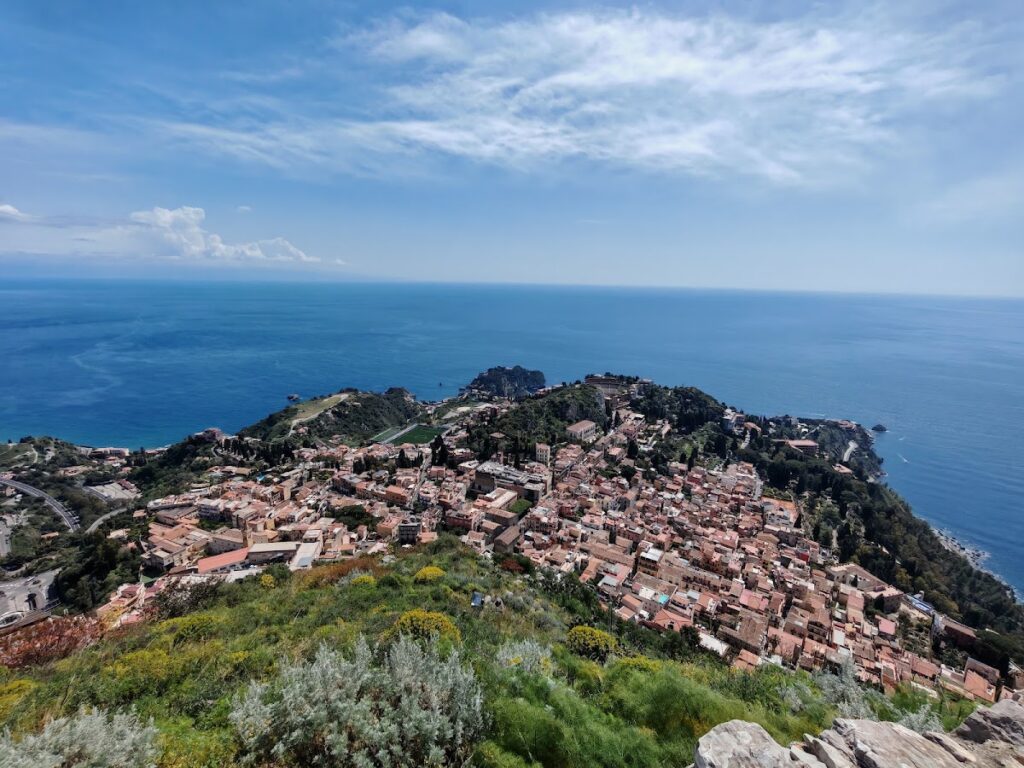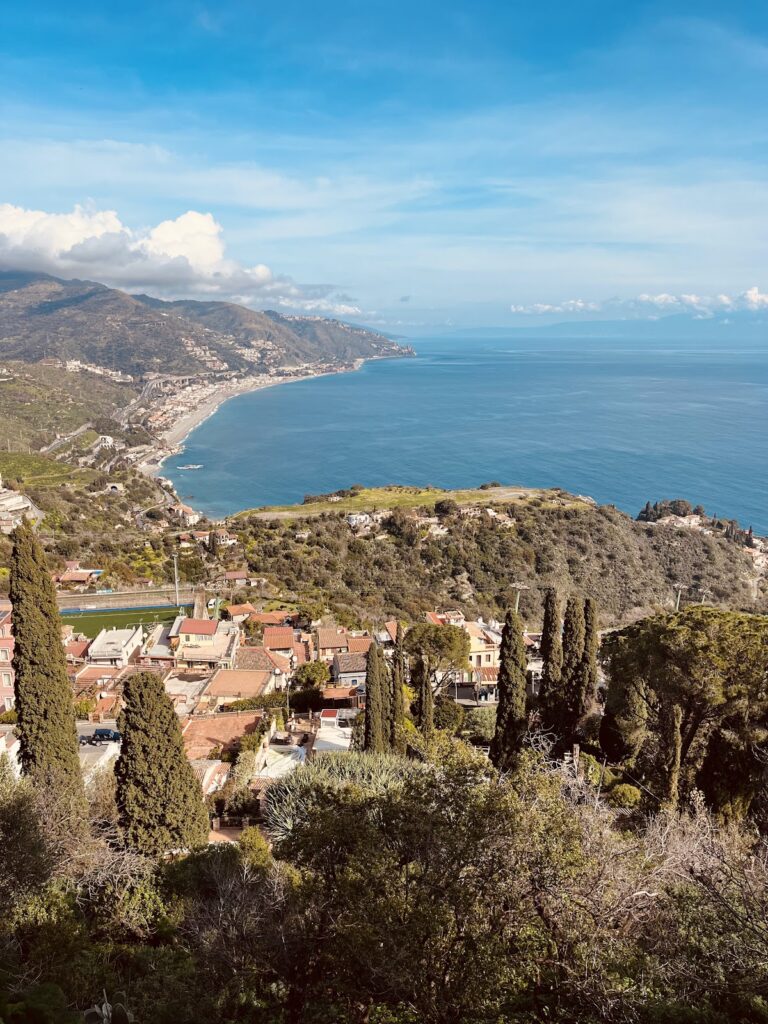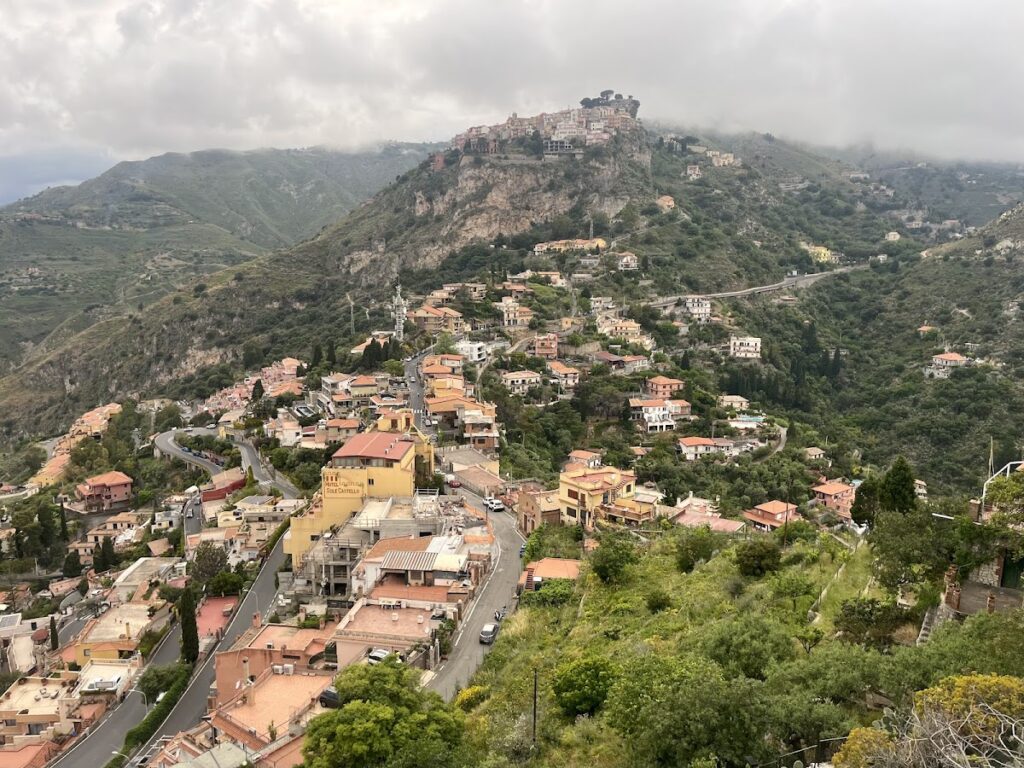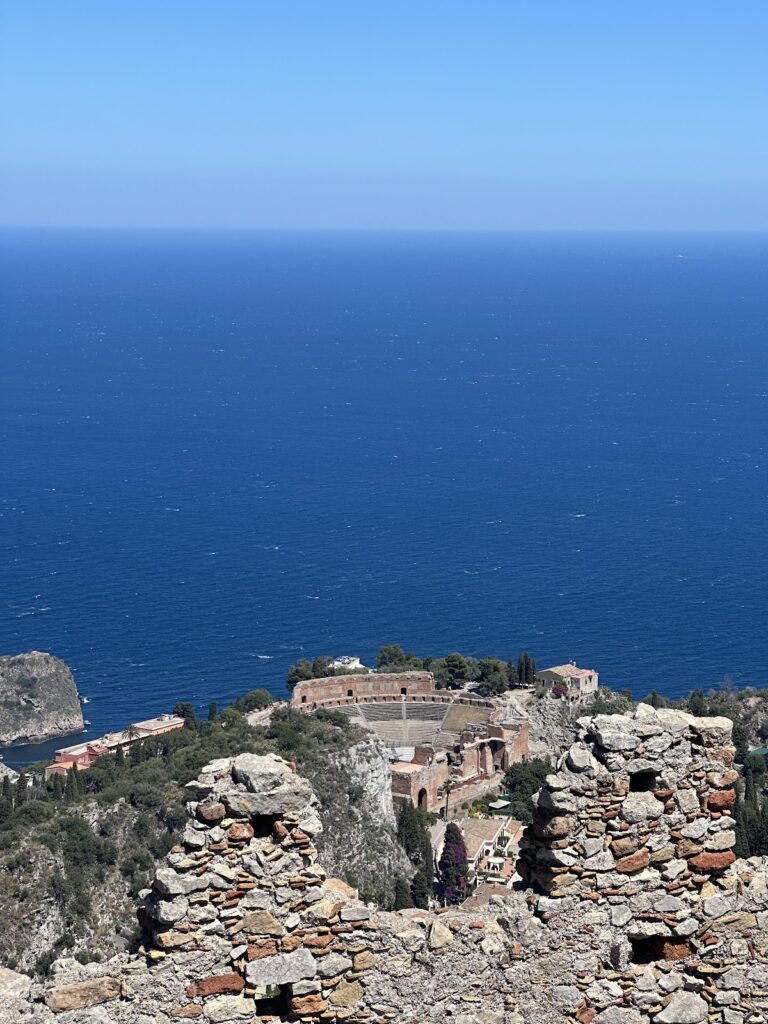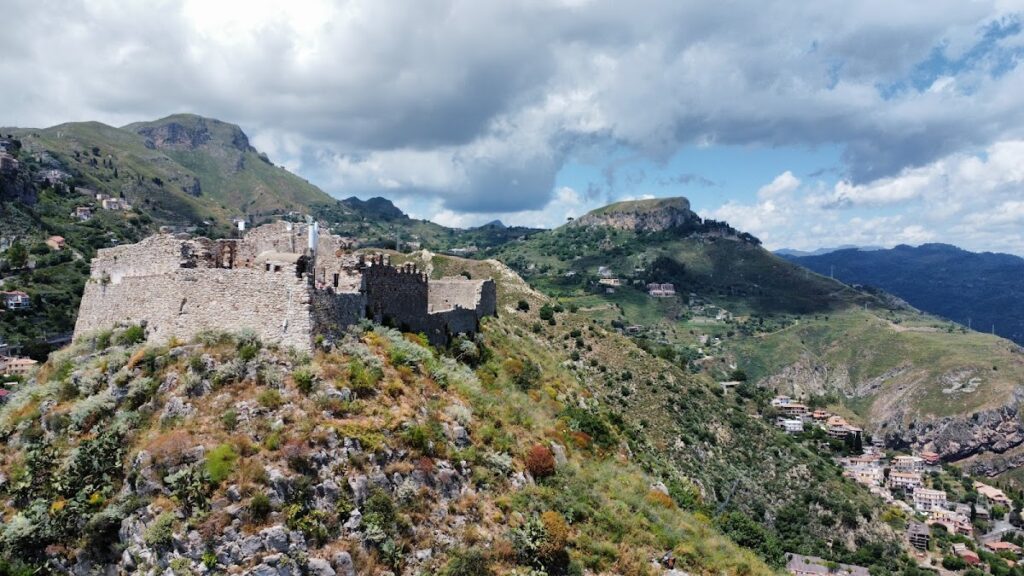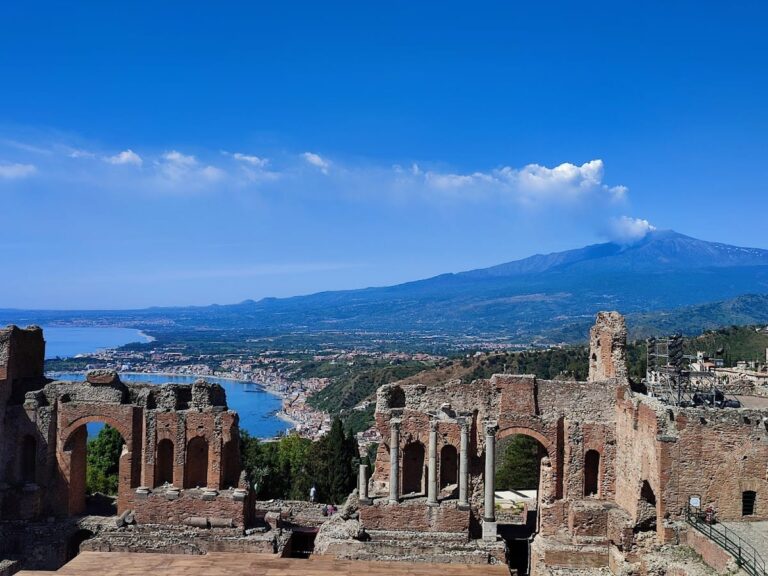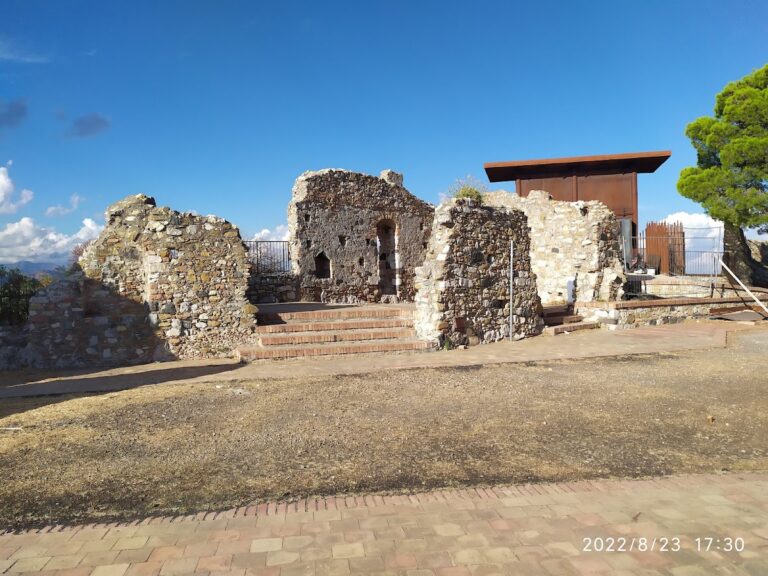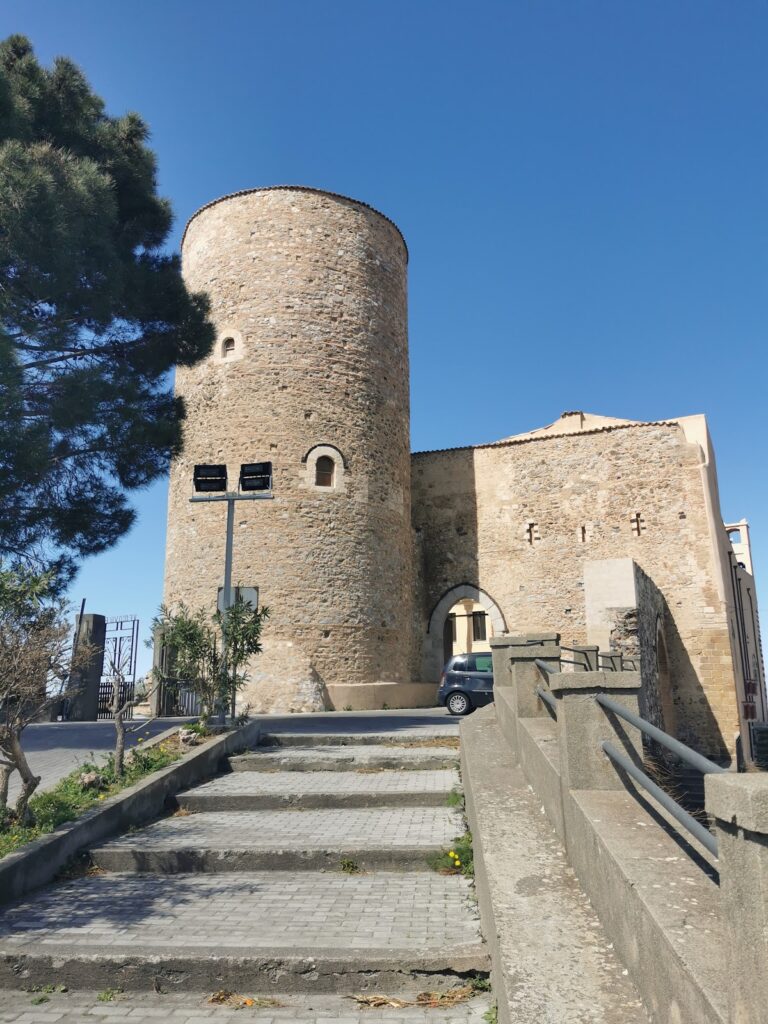Castello di Monte Tauro: A Historic Fortress in Taormina, Italy
Visitor Information
Google Rating: 4.3
Popularity: Low
Google Maps: View on Google Maps
Official Website: www.castelloditaormina.it
Country: Italy
Civilization: Unclassified
Remains: Military
History
The Castello di Monte Tauro is situated on Monte Tauro in the town of Taormina, Italy. This site served originally as part of the acropolis system of ancient Tauromenion, a settlement with roots in Greek and Roman civilization. The castle’s location takes advantage of a steep rocky elevation that overlooks the surrounding landscape and sea.
The earliest known fortified use of this mountain site likely dates back to the Byzantine era. During this time, it acted as a defensive position against Arab raids, with significant fortification enhancements credited to the Byzantine military leader Constantine Caramalo in the 9th century. This period marked the castle’s initial transformation from a classical stronghold into a medieval fortress.
Between the early 10th century and the late 10th century, the castle endured repeated attempts of conquest by Arab forces. Three major sieges occurred from 908 to 969 AD, culminating in the definitive Arab victory in 969. Following this, the area came under the control of the Emirate of Sicily. It was during the 11th century under Arab rule that much of the current castle structure was built, establishing a fortified presence on Monte Tauro.
The Norman conquest arrived in 1077–1078 when Count Roger I laid siege to Taormina, employing a strategic blockade that cut off supplies to force the Saracen defenders’ surrender. After the castle passed into Norman hands, it saw further modifications to its defenses and usage. In the following century, during the 12th century, the castle was managed by the nearby monastery of San Salvatore della Placa near Francavilla di Sicilia, serving an important coastal surveillance role.
Later administrative control shifted to nobles loyal to King William II of Sicily and Emperor Frederick II. These rulers influenced architectural features visible in the castle, reflecting styles associated with Frederick II’s reign. Throughout the 14th to 16th centuries, under the rule of the Aragonese and Spanish authorities, the castle passed through various castellans, including the Balsamo family. Although its military role gradually diminished after the 16th century, the surrounding area gained religious significance with the establishment of the Madonna della Rocca sanctuary around 1640, situated near the castle grounds.
Remains
The surviving structure of Castello di Monte Tauro presents a trapezoidal layout that follows the natural contours of the rocky outcrop nearly 400 meters above sea level. The fortification’s outer walls remain largely intact, enclosing the site, while much of the internal wallwork and roofing have collapsed over time. This configuration reveals the castle’s role as a stronghold adapted to the mountainous terrain, designed to maximize defensive advantage.
From its elevated position, the castle offers commanding views extending across the Ionian Sea, the northern Strait of Messina, to the Alcantara valley and Mount Etna in the south, and the Peloritani mountains to the west. These sightlines underscore the castle’s historical function as part of a coordinated defensive system, including the higher Castello di Mola, connected by a switchback mountain road about three kilometers in length, and the Torre Malvicino, built on royal orders.
The visible architecture predominantly reflects construction phases from the Norman era and modifications linked to Emperor Frederick II. Although detailed information on building materials and decoration is not recorded, the structural style demonstrates the melding of these medieval influences. The castle’s continued relevance through multiple epochs is also echoed in the nearby presence of the Madonna della Rocca sanctuary, founded in the mid-17th century, which forms a notable religious landmark in proximity to the fortress.
Overall, the castle remains stand as a testament to its strategic placement and layered history through Byzantine, Arab, Norman, and later medieval periods, though much of its interior fabric lies in ruin.
